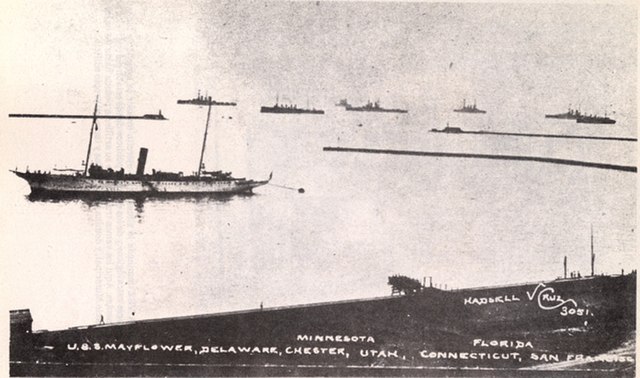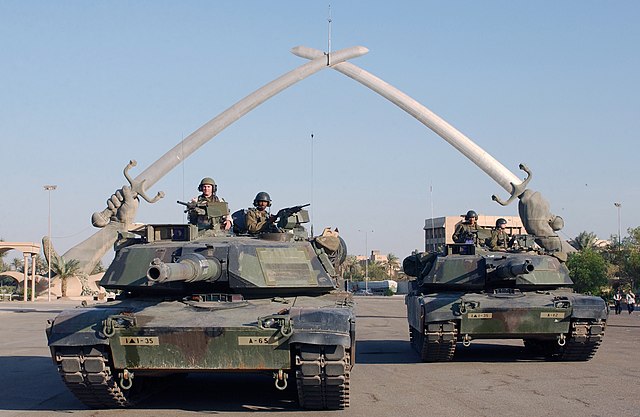The Banana Wars were a series of conflicts that consisted of military occupation, police action, and intervention by the United States in Central America and the Caribbean between the end of the Spanish–American War in 1898 and the inception of the Good Neighbor Policy in 1934. The military interventions were primarily carried out by the United States Marine Corps, which also developed a manual, the Small Wars Manual (1921) based on their experiences. On occasion, the United States Navy provided gunfire support and the United States Army also deployed troops.
United States Marines with the captured flag of Augusto César Sandino in Nicaragua in 1932
United States Marines with a Haitian guide patrolling the jungle in 1915 during the Battle of Fort Dipitie
William Allen Rogers cartoon depicting Theodore Roosevelt's Big Stick ideology
American warships off Veracruz in 1914
Military occupation, also called belligerent occupation or simply occupation, is the temporary control exerted by a ruling power's military apparatus over a sovereign territory that is outside of the legal boundaries of that ruling power's own sovereign territory. The controlled territory is then known as the occupied territory, with the ruling power being the occupant. Occupation is distinguished from annexation and colonialism on the basis that it is a power structure that the ruling power intends to keep in place only temporarily. In many cases, the occupant may establish a military government to facilitate the administration of the occupied territory, though this is not a necessary precondition for occupation to take place.
American tanks at the Victory Arch in the city of Baghdad during the occupation of Iraq, 2003
Indian troops of the 5th Royal Gurkha Rifles in the city of Kure during the Allied occupation of Japan, 1946
German troops at the Champs-Élysées in the city of Paris during the Prussian occupation of France, 1871
Lebanese protesters of the Cedar Revolution during the Syrian occupation of Lebanon, 2005








